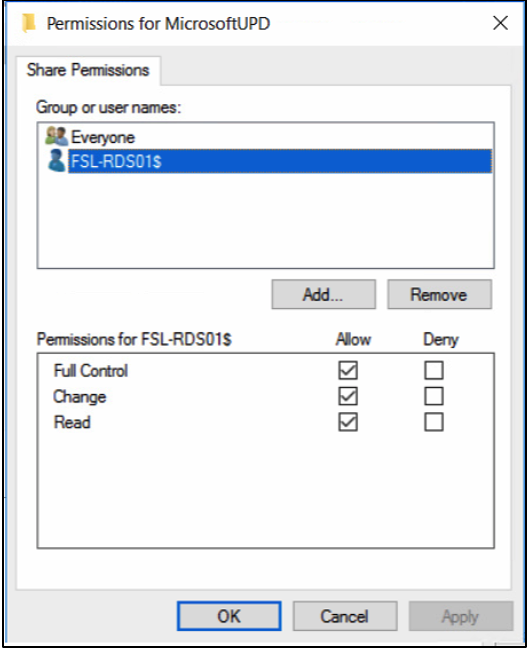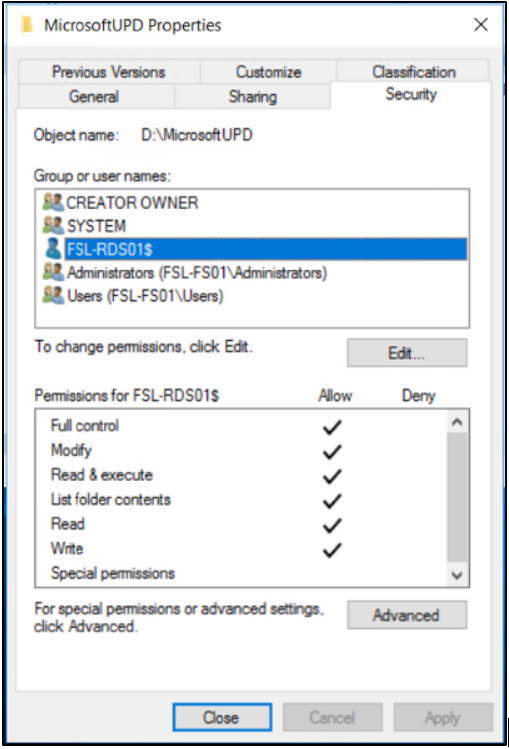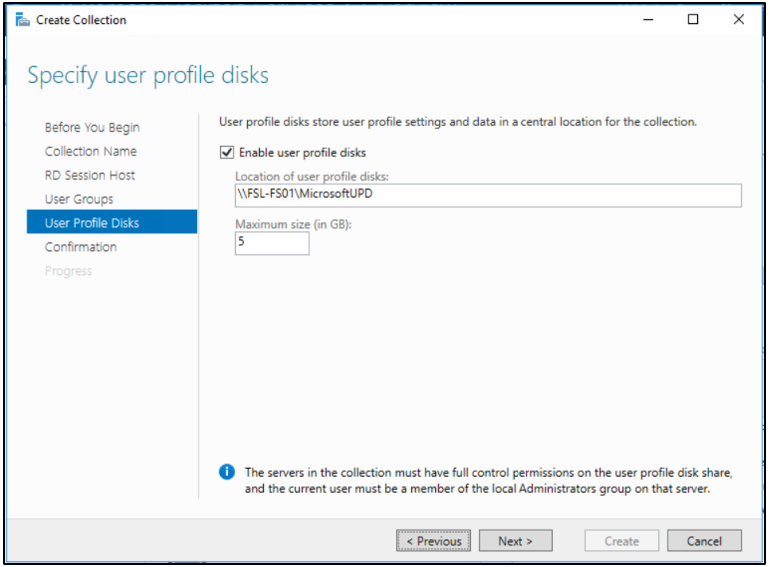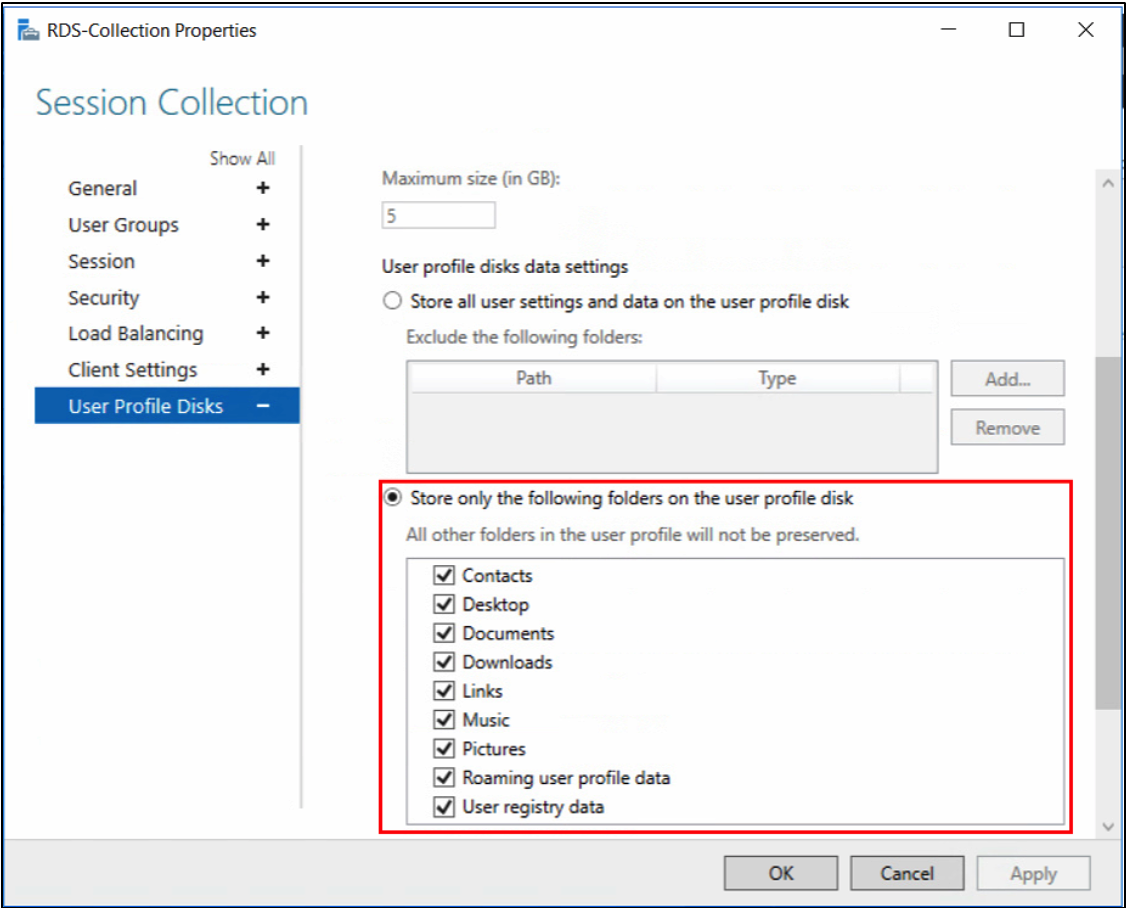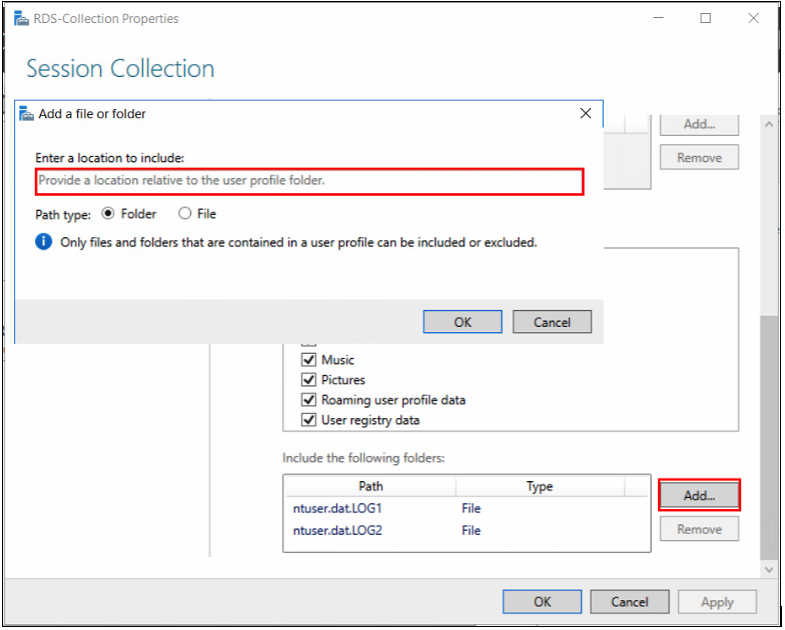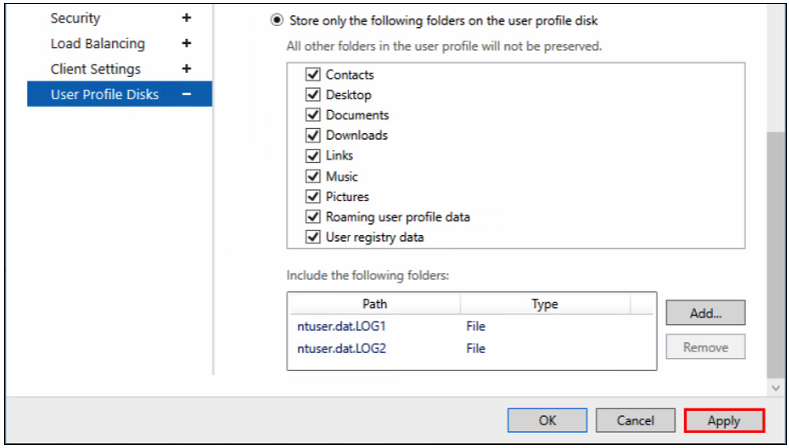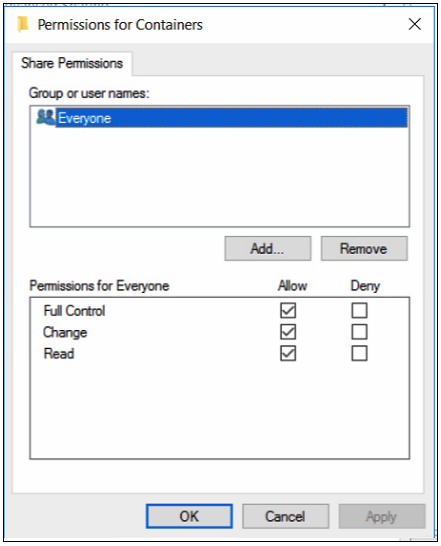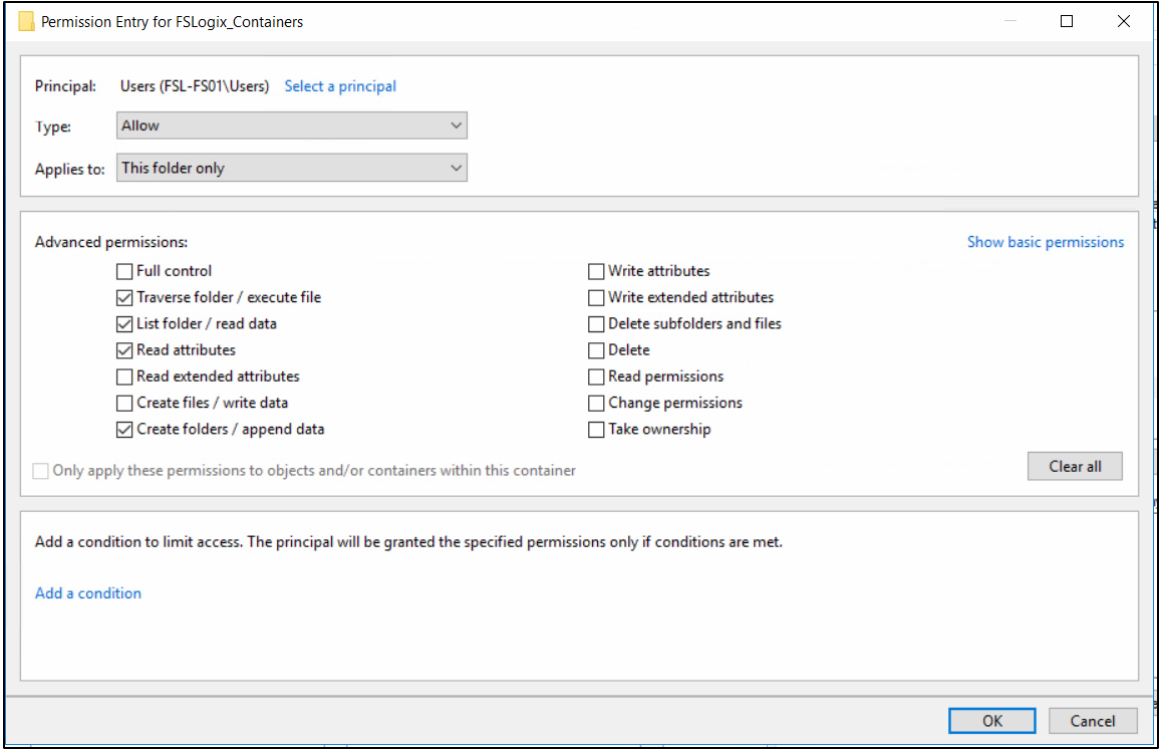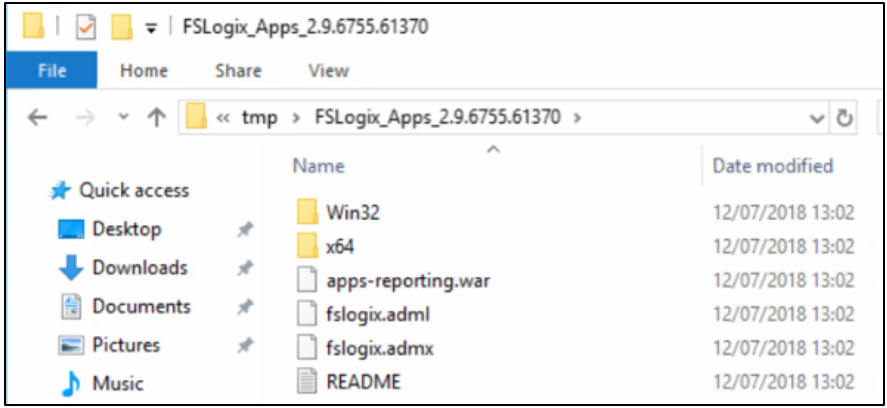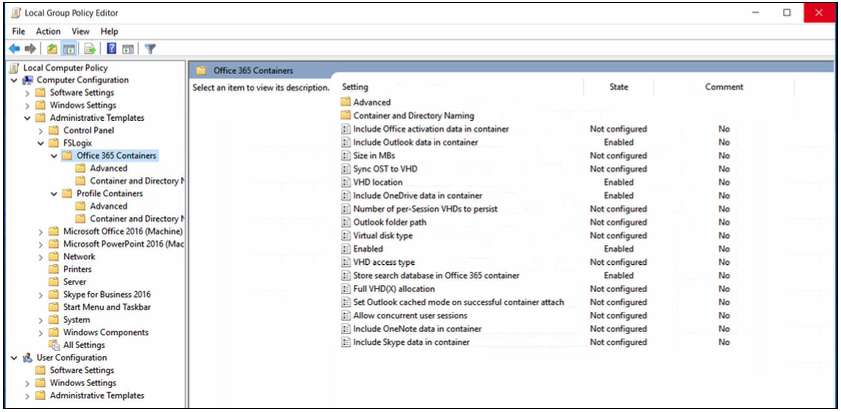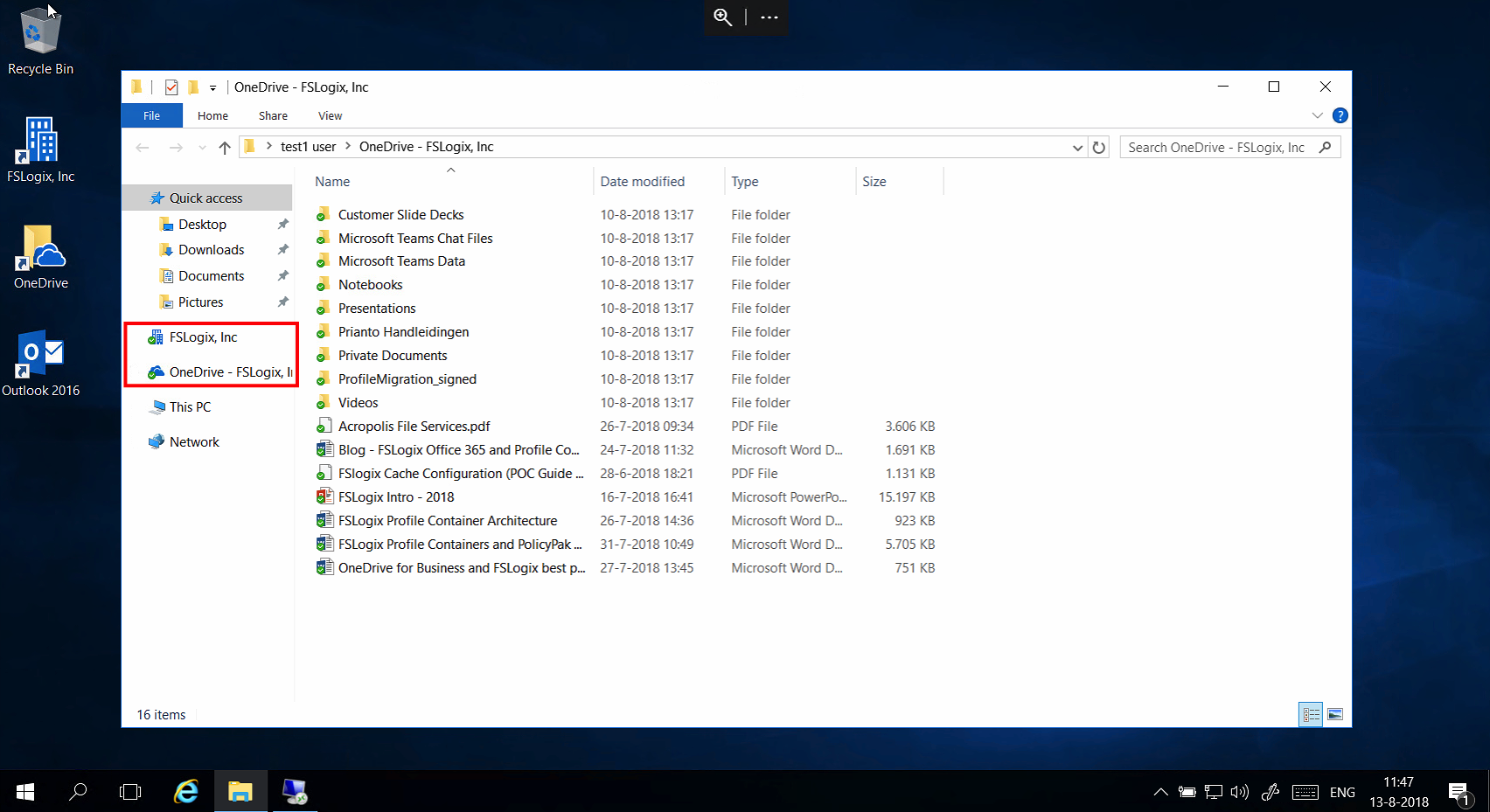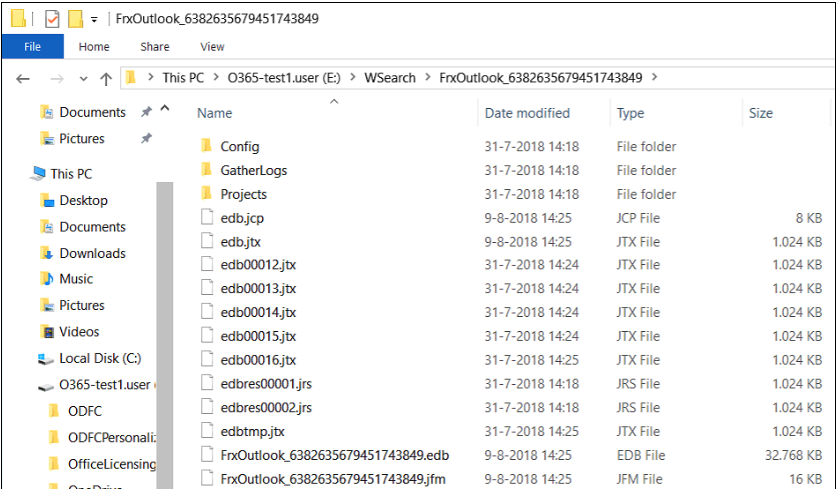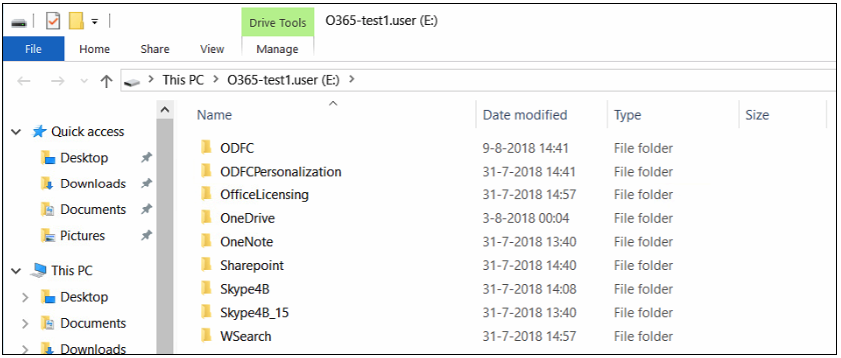
How to use Microsoft UPD and FSLogix Office 365 Containers to roam OneDrive, SharePoint, Outlook, and Search on Remote Desktop Services
Are you using User Profile Disks (UPD) in your Remote Desktop Services environment? Do you want to extend that with the support for Outlook Search roaming, OneDrive, and SharePoint for Business in your Virtual Desktop environment? Did this all made you curious? Please read the rest of the blog.
Microsoft delivers a reasonably new profile solution named User Profile Disks for Remote Desktop Services (RDS), which was introduced in Windows Server 2012. UPD is very lightweight, and it works by moving the complete User Profile to a VHD file so settings follow users. The VHD is mounted and appears in its proper location through the use of a junction point. UPD can be useful in certain scenarios, there are limitations that leave the door open for the additional functionality provided by FSLogix Profile Container and Office 365 Container.
What problems can FSLogix solve?
As mentioned at the beginning of this article – Microsoft uses symbolic links / junction points (Microsoft calls them “junction points,” but they’re commonly called “symbolic links” or “symlinks” in other OSes.) as the underlying technology for their folder mountings. This works in many scenarios, but for technical reasons it will never support Microsoft OneDrive and Teams. Both programs only work when the OS thinks it locally installed, and with junction points it doesn’t.
Likewise, UPD lacks a few additional features, like:
- It doesn’t help address the long-standing problem of not being able to use Windows Search in non-persistent VDI environments.
- It also doesn’t help enable Outlook Search capabilities in RDSH environments.
- It doesn’t include multi-session support, so nested remote desktops or connections to different servers run into problems with empty, inconsistent profiles.
Where FSLogix fits
FSLogix has technology that enables all of the features mentioned above. For example, our filesystem filter driver masks the folder where the VHD is mounted, so it behaves as if it’s locally-mounted, avoiding the problems introduced by using junction points and enabling the use of Teams and OneDrive.
From an Outlook and Windows Search perspective, our FSLogix Office 365 Container product hooks the indexing database of the server (and desktop) operating system and stores it into a user’s profile. Even Microsoft admits that Windows Search is working better with FSLogix. Please read this official Microsoft docs article with the title – Dealing with Outlook search in non-persistent environment.
Also, FSLogix’s Container products (meaning both Office 365 Container and Profile Container) include multi-session support for the container, but the UPD Container does not. If you only use UPD, the second remote desktop session will be empty and stored on the local OS drive. To solve this issue, you’ll need either Office 365 Container or Profile Container. Office 365 Container will only roam the Office data (Outlook OST, OneDrive cache, etc…) with the user between multiple sessions, whereas with Profile Container the entire user profile will be available in all sessions.
A closer look
While it looks like junction points are sufficient to redirect user activity to a remote location, Windows treats that scenario differently. In fact, you can tell if a folder is a junction point right from Windows Explorer.
Junction point can be detected by the following icon below next the users profile.
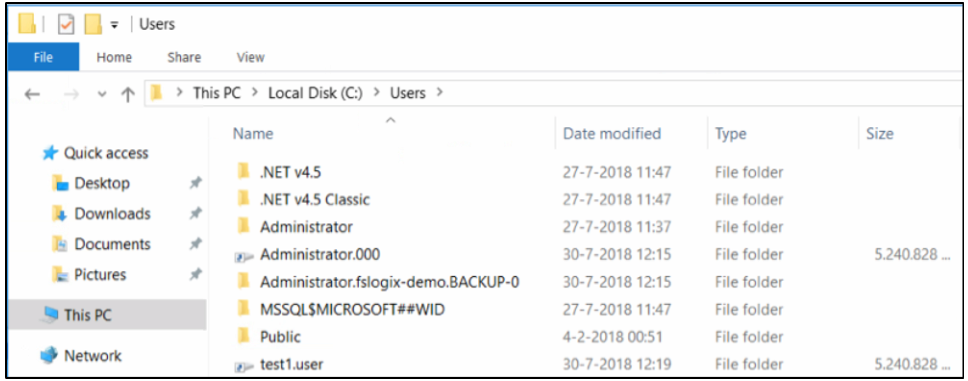 You can also see it in the Disk Management Console of Windows – when you open the Cache Drive Letter and Paths for User Disk window:
You can also see it in the Disk Management Console of Windows – when you open the Cache Drive Letter and Paths for User Disk window:

OneDrive and SharePoint will never work in this configuration because OneDrive detects the junction point and fails to configure. You’ll get the error below:
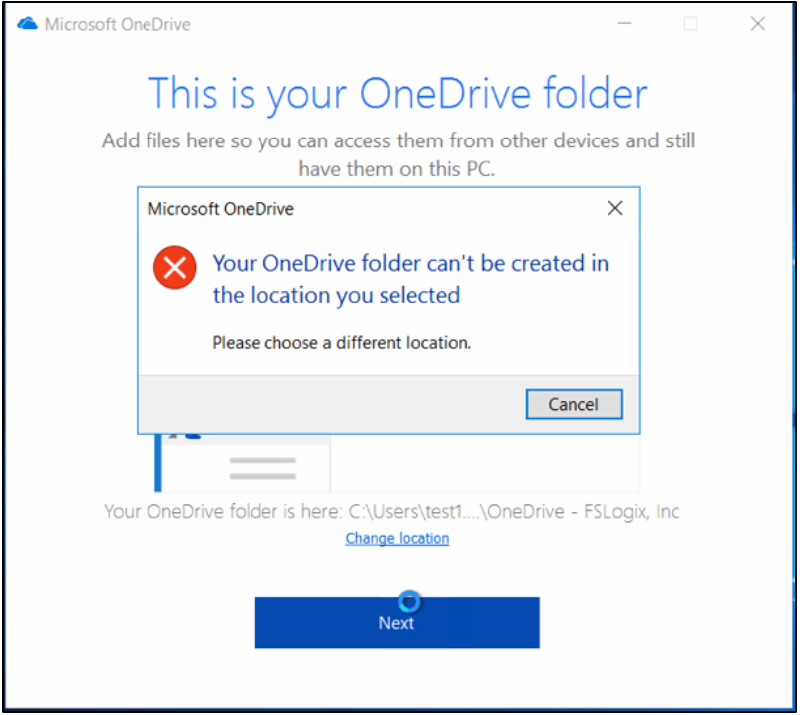
All the FSLogix products let the operating system think that the folders are local. We can do that by using smart filter drivers in Windows, which inject the folder mountings of Office 365 on the file system level so the operating system cannot detect any mounting points. Because of this approach, Microsoft OneDrive and Teams are work inside FSLogix container products.
See below how FSLogix operates to the operating system in a more architectural concept.

When using FSLogix Office 365 Containers along with Microsoft UPD, you’ll have 2 (see picture below) Virtual Hard Drive containers attached to your session – one to store your user profile in, and another one for all the Office 365 files of the end user. By using different exclusions for the folder location, FSLogix makes it possible to work together as one solution for all your Office 365 Applications, such as:
- Outlook
- OneDrive for business
- Search
- SharePoint folder synchronization
- Skype for Business GAL
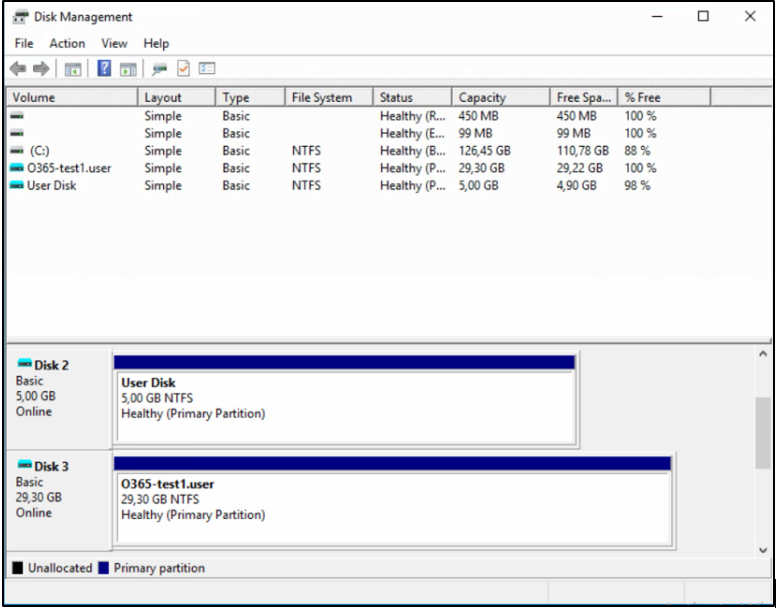
It’s all about to get better!
It’s worth mentioning that our FSLogix Container solutions are getting a new major feature upgrade in the next upcoming weeks, named Cloud Cache. This new functionality adds the possibility to add multiple storage repositories to our existing products to provide high availability to on-premises and cloud environments.
Imagine a digital workspace scenario where you are running a VDI environment entirely in Microsoft Azure. Typically, you store your profile data on a Windows file hare in Azure Infrastructure-as-a-Service. Our Cloud Cache Driver makes it possible to provide the store of the Containers directly much less expensive Azure Blob Storage.This is just one of the significant use-cases which we’re solving with this tremendous new Cloud technology.
Other uses of Cloud Cache include high availability in the event of storage or network interruptions, profile storage server migrations, cloud migrations, offline access to FSLogix containers, and more. To catch up on Cloud Cache, check out our blog, Introducing Cloud Cache.
For a walkthrough on setting up FSLogix Office 365 Container with Microsoft UPD, head over to our FAQ section (which includes lots of information on using our products), or just click here.
How to Activate Microsoft UPD in Remote Desktop Services
First, we need to create a UPD SMB network file share on a Windows Server, or SMB supported storage server to store our VHD files.
Make sure the Remote Desktop Session Host servers are listed in the Share Permissions – as Full Control
The same counts for the NTFS rights part. The rights are normally automatically set during the RDS Collection configuration – so you probably only need to confirm the rights.
Create or modify the RDS Collection
User Profile Disks can only be used on a Remote Desktop Services environment and can be activated during the Collection setup or through PowerShell cmdlets. Enter the created file share UNC path and give in the maximum size of the VHD Container.
Activate exclusions for FSLogix Office 365 Containers
When the FSLogix Office 365 container is used together with any other profile solution (except local Windows profiles) – normally the following folders need to be excluded from handling by the profile solution or errors will likely occur.
Although, currently it isn’t possible to remove the junction point from the C:\Users\USERNAME folder location with the exclusion option – because of a bug (see the TechNet Forum article below) in UPD exclusions are not working upon the normal User Profile inclusions.
TechNet Forum article: https://social.technet.microsoft.com/Forums/windows/en-US/32738684-66c5-4cc7-a8dd-15752dc2abea/server-2012-r2-rdsh-user-profile-disks-exclude-temp-directories?forum=winserverTS
To solve this problem, we need to activate the second option in the RDS Collection configuration setup, named – Store only the following folders on the user profile disk.
This approach will remove the junction point from the C:\Users\Username – User Profile.
And re-creates them directly on the different User Profile folders within the users folder. You can detect the junction points now through the – shortcut – icon next to the Documents folders, or by the .symlink type of a folder.
Keep in mind that you need to be sure that all the Local AppData inclusions(if any) are listed and active in the in the User Profile Disks Configuration screen – this only by adding the locations manually will make the folders persistent.
Add them all wisely in this inclusion console and the folders, and files will remain in the User Profile Disk!
From an Outlook perspective – it’s not needed to include anything as well now have included the Roaming Outlook Personalization (SRS file location) folder in the Office 365 container as well.
Don’t forget to click on Apply
We are now finished with the configuration part of User Profile Disk of Remote Desktop Services and can continue with the FSLogix Office 365 Container installation and configuration.
How to Install and Configure FSLogix Office 365 Containers
Create another SMB file network share with the a random name, such as Containers to identity the differences
Make sure to share the Container folder
Assign the following Share Permissions
(we take care of the most important rights on the NTFS filesystem level.)
Define the following NTFS right on the Container folder
Note: You can remove all the inheritance rights as well if you want.

Set at least the minimum rights as named in the above table. Please see the screenshot below for the most import special permission settings at the user level.
Download the FSLogix Apps Software– request a trial here
Put in your FSLogix License key– or use the 30 days trial
Accept the license terms and Click Install
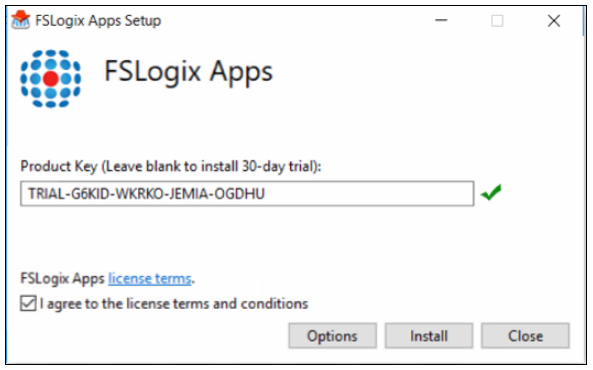
The installation is finished
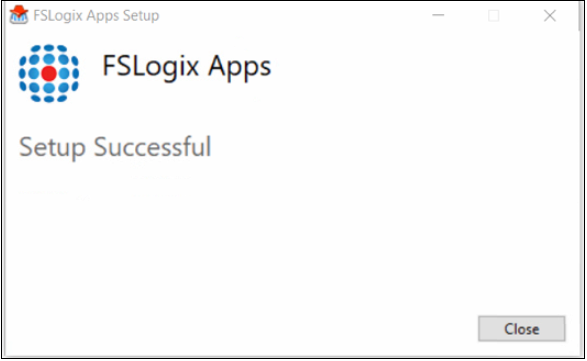
Create the following register keys – or upload the ADMX and ADML FSLogix Group Policy files delivered in the root of installation files folder
Change the VHDLocation registry entry to the SMB share you just created
Note: The Container files and folders will automatedly be created by the following index SID_Username
When you use the Group Policy method, please activate the following setting under the FSLogix folder.
And the following settings under the Office 365 Containers folder.
Note: FSLogix Office 365 Containers support Concurrent user sessions – Therefore – keep in mind that FSLogix Office 365 Containers includes multi-session support for the Container, but the UPD Container does not. The second Remote Desktop session will have the Office 365 data, such as Outlook OST cache-file and Search available, but the Windows profile will be empty and stored on the local OS Drive. When you want to solve this issue, and need multi-session support. Please have a look at our FSLogix Profile Container solution – this is our complete profile solution, which doesn’t require UPD anymore.
Configure the following Group Policy settings and assign them to the Organizational Unit of your Virtual Desktop environment
The result of implementing UPD and FSLogix Office 365 Containers
You are now ready to use FSLogix Profile Containers together with Microsoft User Profile Disks (UPD) – to use Windows Search database, OneDrive and SharePoint multi-session roaming on Remote Desktop Services.
Background info
At the moment you logon to your Remote Desktop environment, 2 Virtual Hard Drive (VHD) Containers will be mounted to the system.
The User Disk is the UPD VHD:

The O365-Username Disks is the FSLogix Office 365 Container:

OneDrive and SharePoint for Business are now stored in the persistent FSLogix O365 Container:
The Windows Search database is now stored in the FSLogix Container and is persistent for every Remote Desktop session:
The other folders are included in the FSLogix Office 365 Container as well:
You’re now ready to use Office 365 Solution on your Remote Desktop Digital Workspace environment! See the video below for a demonstration of everything working together:
I hope this helps. and thanks for stopping by.
Cheers,
Christiaan







